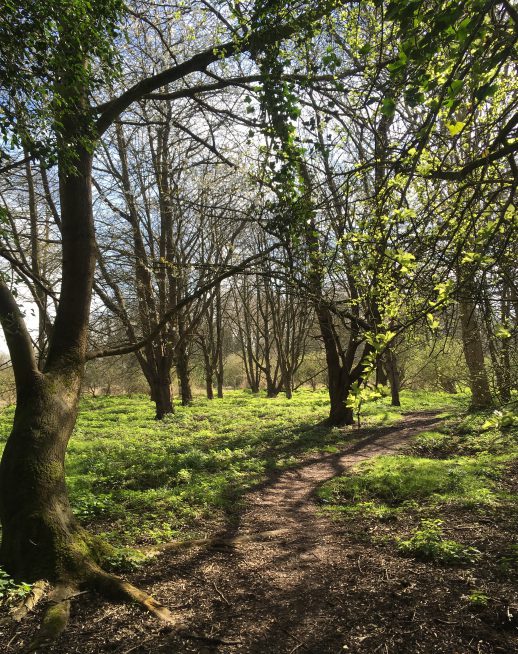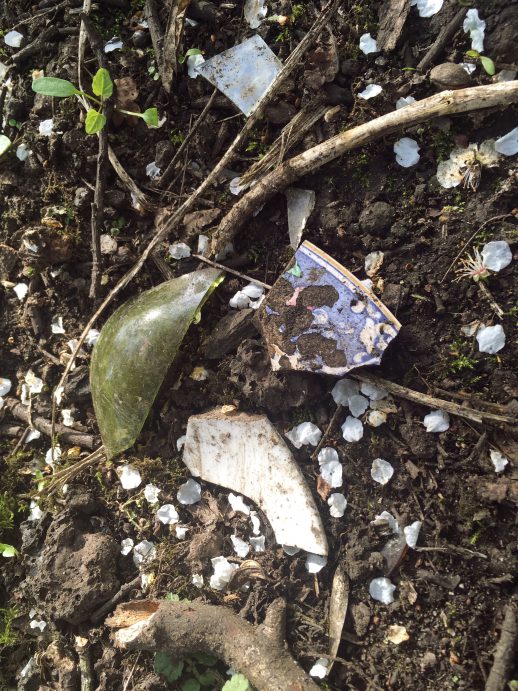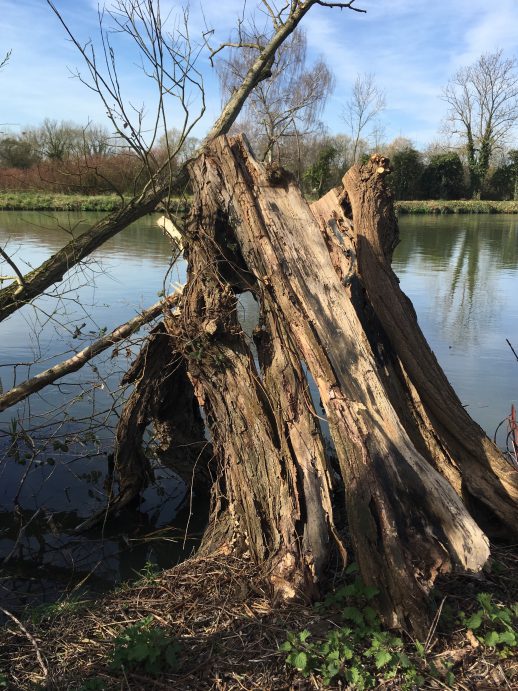Words and pictures: Melissa Harrison
I typed ‘[ENDS]’ on the last page of a manuscript this week, and then went out and bought myself a glass of prosecco. Unfortunately, typing ‘[ENDS]’ isn’t quite the same thing as finishing writing a novel, but it’s a milestone nonetheless. I reached it in Oxford, at the home of a fellow writer; I went there to write and look after her dog, a bit like my own but much tinier, while she was away.
Oxford is a city replete with ghosts for me. My father grew up here, spotting wartime planes, shooting rockets through the windows of the Randolph Hotel and learning to play cricket on the pitches at Magdalen College School, where he went after passing his eleven-plus. The Harrison family trade was (and still is) hairdressing; Dad’s father became a town councillor, was elected mayor, and gave the green light to the city’s much maligned one-way system. My father grew up firmly ‘town’; but I became ‘gown’ when I arrived to begin an English degree in 1993. As a comprehensive school pupil, life at Oxford was not easy, but I managed to do well because I sacrificed the part of myself that loved words and stories: the part that ached to do one day what I do now. To finish writing a novel in the city, a quarter of a century after I matriculated, is bittersweet.
Every day, before sitting down to work, I took the tiny dog to Aston’s Eyot (from ‘ait’, a small island) to walk. Bounded by the Thames, the Cherwell New Cut and the Shire Lake Ditch, it’s a damp, 33-acre plot of scrub and woodland criss-crossed by human and animal paths. It’s not somewhere I ever went during my student days, although I often walked along the Cherwell and back by Christchurch meadow, and must have passed less than a quarter of a mile away. As for the rest of my old haunts, I made a conflicted, unheimlich pilgrimage on the day I arrived – and then I went back to walk the tiny dog, and let the past be.
Once a watermeadow for grazing and then a market garden, in the Victorian era Aston’s Eyot was used as the town’s tip. The evidence is everywhere: when the sun shines the mud paths sparkle with glass fragments, while in the undergrowth are pottery sherds, whelks, old bits of tile and oyster shells. Dumping continued here until the 1940s, and in the 80s it was dug over by antique bottle collectors; the pits and heaps left by their excavations are still visible, clothed by nettles which love such nutrient-rich soil. In one area, red-tailed bumblebees and brimstone butterflies dance among apple, pear and cherry-plum trees grown from the spoiled fruit, destined for Oxford’s covered market, which was dumped here. It is a landscape formed entirely from the past; who knows, things discarded by my father could well be somewhere here.
It’s the end of March and the birdsong has not yet reached its yearly climax. There are chiffchaffs, great tits, blue tits, mistle thrushes, robins, dunnocks, chaffinches and Cetti’s warblers, but no whitethroats, blackcaps or willow warblers yet. Vibrating on the riverbank the tiny dog, a Jack Russell, glares at coots, mallards and placid greylag geese, and one morning, in a downpour, we watch a heron lumber effortfully up and away: ‘One of the most begrudging avian take-offs is the heron’s “fucking hell, all right all right”,’ as Paul Farley writes. Another day, in bright sunshine, I watch open-mouthed as a red kite is mobbed just yards from me by crows, its screaming calls unearthly, the corvids neatly demonstrating its impressive size. The dog strains at her lead impatiently, oblivious to the huge bird of prey wheeling overhead.
Aston’s Eyot is ideal for walking and thinking, for while its maze of paths are extremely disorientating – to me, at least – it is nevertheless impossible to get lost. If you just keep going you will, at some point, emerge somewhere you recognise; and this allows me enter that ideal state, neither fully occupied nor entirely idle, in which new connections can be made. The tiny dog knows the way, in any case – although she can only be trusted to navigate the onward journey, and will never willingly turn for home. She has a retractable lead that gives her freedom within a certain radius, and in the five days we are companions we learn from one another: she begins to look where it is I’m turning when I say ‘this way’, and I learn to spin smartly on my heel if she charges past me on the other side than the lead. She agrees to wait when I stop to take pictures, and I discover that her valour doesn’t extend to nettles, her tummy being that much closer to the ground than my own dog’s.
The Eyot is popular. There are other dog-walkers and runners, rowers on the river, the remains of fires on the riverbank, and on my final morning I watch an Eastern European angler land an astonishingly tiny fish. Any muddy bits of path show the marks of trainers, dog paws and the small, sharp slots of muntjac; there are badger latrines in the wooded part, and mink traps at the water’s edge.
Before I went to university I used to come to Oxford with my parents to visit my father’s mother in the John Radcliffe, where she was confined to a geriatric ward after a series of strokes, and where she eventually died. Without the care and continuity she provided my grandfather’s dementia worsened; now, my siblings and I try to keep our own father’s dementia from doing the same. As time goes on, more and more of his adult life is forgotten, and the more vividly he inhabits the Oxford of his childhood in his mind. I send him a postcard showing an aerial view of the city, and tell him which street I’m staying on; he’ll love it, I think, although he may be a little hazy about who exactly I am.
On the Eyot the hawthorns are in fresh new leaf, but most of the big trees’ branches are still bare. Along the bank of the Thames a line of veteran crack willows are reaching the end of their long lives and their huge, ruined carcasses, stately and terrible, are splitting and collapsing where they stand. Now and then a university rowing crew shoots past them along the water, the cox calling encouragement; the tiny dog and I watch the wake from their passage lapping at the tired old willows’ roots.
*
Mel will be amongst the guests on the Caught by the River stage at this year’s Port Eliot Festival. Her most recent book, Rain, is now out in paperback.
Melissa Harrison on Caught by the River / on Twitter


